

Neal.fun. : PS-Future. Invasive Species A Module in Planning for Sustainability About This Module: This module focuses on the role of non-native species in ecosystems.

Students explore local examples of such species, including how and why these species become established in ecosystems. : PS-Future. Working with Wind Energy. Curriculum Division / HS Environmental Science. EarthLabs. This spectacular “blue marble” image is the most detailed true-color image of the entire Earth to date.

Using a collection of satellite-based observations, scientists and visualizers stitched together months of observations of the land surface, oceans, sea ice, and clouds into a seamless, true-color mosaic of every square kilometer (.386 square mile) of our planet. Provenance: NASA Goddard Space Flight Center Image by Reto Stöckli (land surface, shallow water, clouds). Enhancements by Robert Simmon (ocean color, compositing, 3D globes, animation). Data and technical support: MODIS Land Group; MODIS Science Data Support Team; MODIS Atmosphere Group; MODIS Ocean Group Additional data: USGS EROS Data Center (topography); USGS Terrestrial Remote Sensing Flagstaff Field Center (Antarctica); Defense Meteorological Satellite Program (city lights). Earth and environmental science classes are changing. Audio Archives. Modules & Activies Main Page. Using climate science models and NASA satellite images and data sets, students apply problem-solving methods and scientific inquiry skills to address six climate-related scenarios.

More Each of the problem-based learning scenarios also includes teacher pages to help educators implement the modules into their classroom teaching. All of the materials are free. Our only request is that teachers register for the site to access the module-specific teacher pages and complete a post-event survey. More Login. Mussels off the coast of Seattle test positive for opioids. As more and more American communities grapple with opioid addiction, the human toll of the epidemic has grown in both scope and severity.
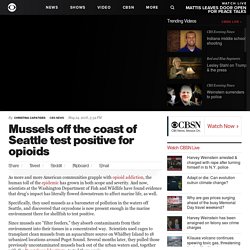
Animals at Risk from Climate Change - Animals At Risk from Climate Change. The Energy Lab. The world’s energy consumption is predicted to grow by 56% in the next 25 years*.

As the demand for energy swells, the stores of fossil fuels we currently depend on are dwindling and becoming more costly to obtain. The burning of these fossil fuels also discharges carbon, which has long-lasting negative effects on the environment. For these reasons, researchers and engineers are working to find efficient and cost effective ways to harness energy from renewable sources like solar and wind. In the Energy Lab, you’ll design a city’s renewable energy system by analyzing the same data as the experts.
Just like these energy engineers, you’ll need to weigh the pros and cons of each energy source, assess the availability in that area, and consider the needs of the location. Design a Renewable Future The Challenge You’ll be presented with energy profiles for five different cities across the United States. Heating & Cooling Degree Days - Free Worldwide Data Calculation. Calculating Degree Days. This page explains how Degree Days.net calculates degree days.
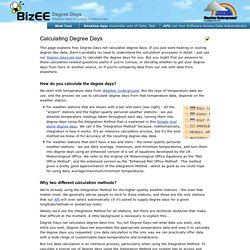
If you just want heating or cooling degree-day data, there's probably no need to understand the calculation processes in detail - just use our Degree Days.net tool to calculate the degree days for you. Predicting Insect Development Using Degree Days. ENTFACT-123: Predicting Insect Development Using Degree Days | Download PDF by Lee Townsend, Ric Bessin, and Doug Johnson, Extension EntomologistsUniversity of Kentucky College of Agriculture Since insects are cold-blooded animals, temperature plays a major role in their growth and development.
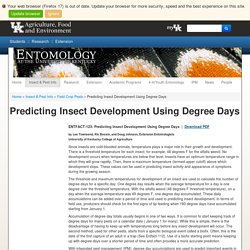
There is a threshold temperature for each insect; for example, 48 degrees F for the alfalfa weevil. No development occurs when temperatures are below that level. 95-Degree Days: How Extreme Heat Could Spread Across the World - The New York Times. Catching the Wrong Species. This article in NSTA’s December 2014 issue of “The Science Teacher” describes a classroom activity that uses engineering design to help students model modern fishing gear to minimize bycatch in the tuna fishery.
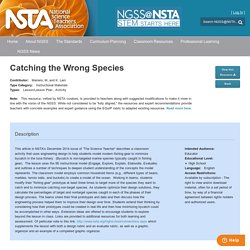
(Bycatch is non-targeted marine species typically caught in fishing gear). The lesson uses the 5E instructional model (Engage, Explore, Explain, Elaborate, Evaluate) and outlines a number of techniques to deepen student understanding of the concepts the model represents. The classroom model employs common household items (e.g., different types of beans, marbles, tennis balls, and buckets) to create a model of the ocean. Breathingearth - CO2, birth & death rates by country, simulated real-time.
Global Warming Interactive, Global Warming Simulation, Climate Change Simulation. First Mammal Species Goes Extinct Due to Climate Change The humble Bramble Cay melomys has disappeared from its island in the Great Barrier Reef.

Climate Change Making Calendars Run Amok People in Central Asia are recalibrating their system of time to adapt to a changing ecosystem. The Great Energy Challenge The National Geographic initiative is a call to action to become actively involved, to learn more and do more—to change how we think about and consume energy so that we can all help tackle the big energy questions.
U.S.'s First Official Climate Refugees Race Against Time A Native American tribe struggles to hold on to their culture while their land slips into the Gulf of Mexico. GlacierWorks. Lesson 6 – Death Valley Middle Basin Case Study – Baliga Systems Education Experiences.
Geoinquiries. Wastewater treatment upgrades result in major reduction of intersex fish. Upgrades to a wastewater treatment plant along Ontario's Grand River led to a 70 per cent drop in fish that have both male and female characteristics within one year and a full recovery of the fish population within three years, according to researchers at the University of Waterloo.
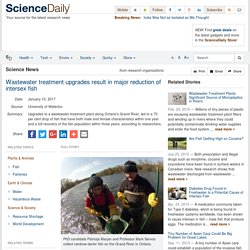
Earth's 'technosphere' now weighs 30 trillion tons. An international team led by University of Leicester geologists has made the first estimate of the sheer size of the physical structure of the planet's technosphere -- suggesting that its mass approximates to an enormous 30 trillion tons. The technosphere is comprised of all of the structures that humans have constructed to keep them alive on the planet -- from houses, factories and farms to computer systems, smartphones and CDs, to the waste in landfills and spoil heaps. Ask the Weather Guys: Was all of autumn unusually warm? Our most detailed view of Earth across space and time. What Is Missing? Tst1608 32. Carbon dioxide levels race past troubling milestone.
Every year, the amount of carbon dioxide (CO2) rises during winter and then falls slightly during the Northern Hemisphere’s growing season, as plants take up the greenhouse gas during photosynthesis. But this year, for the first time since before the Ice Age, CO2 will not fall below 400 ppm. ARKive - Discover the world's most endangered species.
Wildscreen's Arkive project was launched in 2003 and grew to become the world's biggest encyclopaedia of life on Earth. With the help of over 7,000 of the world’s best wildlife filmmakers and photographers, conservationists and scientists, Arkive.org featured multi-media fact-files for more than 16,000 endangered species.
Freely accessible to everyone, over half a million people every month, from over 200 countries, used Arkive to learn and discover the wonders of the natural world. Lesson Plans. Carbon Sequestration NGSS. Investigation 1 The Lesson Level Learning Goals for Investigation 1 are: Ask and answer questions to identify and clarify evidence that various activities can increase the carbon dioxide in the atmosphere and Analyze and interpret data to make a claim about a tree’s ability to store carbon. Students will build towards this goal by engaging with different phenomena.
First, students will figure out that plants absorb carbon dioxide from their environment by using an indicator tool to observe changes in carbon dioxide levels in a controlled environment. We’ve destroyed one-tenth of Earth’s wilderness in just 2 decades.
How Do We Use Energy? School Yard Biodiversity. Ecology. Biology. Smart is the New Sexy - Timeline. Think It’s Hot Now? Just Wait. News from Science - Journal. Simulated global temperature change. Untitled. Bouncy patches of earth in northern Russia are a dire warning. They Released 14 Wolves Into A Park. What Happens Next Is A Miracle And Proves That We Must Take Care Of Our Amazing Planet. Should%20We%20Reclassify%20the%20Wolf%20Town%20Hall%20Debate. Inquiry and Integration Across the Curriculum. Virtual Labs. APES - Kessler Science. Teaching_strategies. Natural Hazards• ELI Natural Hazards category.
Science. BUG LYPHE lesson plan. The Pucker Effect. Data Visualization: How much have we polluted? The Price Is Right. Discover. Dust Bowls and Failed Levees. The Habitable Planet Unit 1 - Many Planets, One Earth // Online Textbook. The Long Haul. Water Actions. Color Me a Watershed. The Lorax By Dr Seuss's (1972)WebRiP XviD_X-Release. HD13_DFS_EDPKG_CHASINGICE_FINAL.pdf. Air Pollution.
The National Climate Assessment and the Next Generation Science Standards. Carbon Connections. 2014 National Climate Assessment Resources for Educators. CLEAN. Ecological Footprint Quiz by Center for Sustainable Economy. 2nd Biannual NGSS STEM Education Conference. Download the conference schedule and a map Session 1 Arms & Arteries: Adventures in Biomechanical Engineering Looking for ways to integrate engineering into your life science and biology classes?
GWOW - Welcome! Ecological Footprint Quiz by Center for Sustainable Economy. Footprint Calculator. APES FORMAL LAB ~ TOXICOLOGY - Toxicology Lab - Brine Shrimp _APES_.pdf. Bear Tracker. WWF Together. LogiCity - Introduction. Global Warming Explained, In About A Minute : 13.7: Cosmos And Culture. Educational Resources. Curricula Resources. Sylvia Earle: My wish: Protect our oceans. Climate change: Rising sea levels hit Maputo, Rotterdam. When people talk about the impact of rising sea levels, they often think of small island states that risk being submerged if global warming continues unchecked.
Microsoft Word - Water_Quality_Testing_StudentREVTSTBlind - 201404SupplementalMaterials.pdf. High School Lesson Plans — Pennsylvania Integrated Pest Management. [PFP#871163962] - pests.pdf. That Magnificent Ground Water Connection: The Water Cycle and Water Conservation (Grades 7-12 curriculum; complete - 11 lessons) - gndw_712.pdf. UCAR Center for Science Education. The Nitrogen Cycle. The Carbon Cycle Game. Energy Flow Through Ecosystems. PS3 Ecology Institute. TPEcoPyramidActivity.pdf. Teacher Resources, Lessons, Plans, Activities. Part 2 - FoodForThought.pdf. Population Connection - Population Connection. Environmental Data Explorer - The Environmental Database (search. COOL 2.0. Climate Discovery Teacher's Guide. Teacher Resources, Lessons, Plans, Activities.